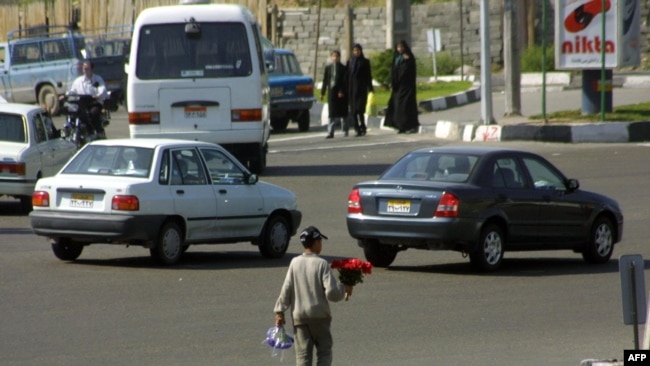Radiofarda – According to the latest information provided by the U.S. Bureau of International Labor Affairs, there have been reports of children working in brick production and carpet weaving around the world. Children also work on family farms illegally and are forced by traffickers to work as street vendors or to beg.
The problem of child labor has been acknowledged by several Iranian officials, including Reza Jafari, the director of the Iran Welfare Organization’s office, who told state-run Iran Labour News Agency in April that “Child workers are so numerous that no organization can single-handedly cope with the problem”
According to UNICEF statistics from 2012, up to 11.4 percent of Iranian children are said to be doing some kind of illegal work. Although children under the age of 15 are forbidden from working by Iranian law, organized crime and poverty make their exploitation a reality.
Human trafficking makes tracking child labor immensely difficult. As well as adults, gangs target homeless children, often from the families of undocumented refugees from Afghanistan. A number of these children are forced to work in agriculture and construction along with adult debt slaves. Organized crime groups force children to work on the street begging or selling goods. Some reports have identified children as young as three who were coerced into this work. Many of the children also undergo physical and sexual abuse from the traffickers, as well as sometimes being forced into drug addiction.
Homelessness makes children especially vulnerable to trafficking and forced labor. According to the government’s official statistics, over 60 thousand children live on the streets in Iran. Non-governmental organizations and charities put this figure much higher at 200 thousand. Child homelessness is particularly concentrated in large urban areas, namely Tehran.
However, Tehran is also currently witnessing the growth of charities and outreach centers working to help prevent families from falling into poverty and becoming vulnerable to child labor. According to prominent economist Hossein Raghfar, 12 million Iranians live in absolute poverty, a significant portion of the overall population of 80 million. Moreover, owing to the government’s cuts to the welfare benefits introduced in 2013, which are unlikely to be reversed any time soon due to the ongoing economic crisis, poverty stricken families cannot solely rely on the support of the state.
Owing to the current instability of the Iranian economy, as well as government inefficiency, Iran is most likely set to continue struggling with widespread poverty and its implications, including child labor. This environment will equally nurture the growth in organized criminal activity, which will further pray on vulnerable adults and children, be they homeless or undocumented refugees.
 Shabtabnews In this dark night, I have lost my way – Arise from a corner, oh you the star of guidance.
Shabtabnews In this dark night, I have lost my way – Arise from a corner, oh you the star of guidance.



